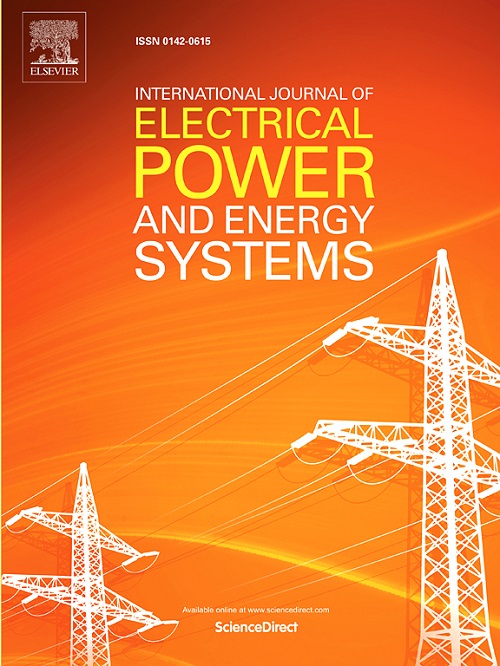A Bi-level Stochastic-Robust Optimal Bidding Model of Wind-Storage System in Spot Markets Considering Internal and External Uncertainties
IF 5
2区 工程技术
Q1 ENGINEERING, ELECTRICAL & ELECTRONIC
International Journal of Electrical Power & Energy Systems
Pub Date : 2025-04-04
DOI:10.1016/j.ijepes.2025.110591
引用次数: 0
Abstract
Developing effective bidding strategies in electricity spot markets is crucial for wind-storage systems (WSS) to improve profits and mitigate risk. During real operations, the bidding strategies of WSS are significantly affected by external uncertainties and internal uncertainties. However, some existing studies only consider a single influencing factor or fail to account for the interaction between the market and participants. To address this problem, a stochastic-robust optimal bidding model (OBM) of WSS considering the combined impacts of external and internal uncertainties is proposed. The proposed model is structured as a bi-level optimization problem to reflect the interaction between WSS bidding and day-ahead market clearing. At the upper level, the bidding strategy of WSS is developed based on the market clearing results by using the stochastic-robust method to consider uncertainties. In the lower level, the clearing process of the day-ahead market is modeled to determine the clearing market price and quantity. To improve computational feasibility and robustness, the modified Column-and-Constraint Generation (C&CG) algorithm is applied to solve the multi-scenario problem efficiently. To validate the effectiveness and practicality of the proposed model, the paper conducts tests on the IEEE 118-bus system and a real-world large-scale system. Taking the IEEE 118-bus system as an example, compared to traditional methods, the proposed approach enables the WSS to achieve a 12% increase in average revenue and a 12.3% improvement in CVaR, indicating higher revenue with lower risk. The computation times of these two test systems are 20 min and 48 min, which can meet the requirements of practical day-ahead market operations.
考虑内外不确定性的风电现货市场双水平随机鲁棒最优竞价模型
制定有效的电力现货市场竞价策略对提高风电系统的收益和降低风险至关重要。在实际运行中,WSS的投标策略受到外部不确定性和内部不确定性的显著影响。然而,现有的一些研究只考虑了单一的影响因素,或者没有考虑到市场和参与者之间的相互作用。为解决这一问题,提出了考虑外部和内部不确定性综合影响的WSS随机鲁棒最优竞价模型。该模型被构建为一个双层优化问题,以反映WSS竞价与日前市场出清之间的相互作用。在上层,采用考虑不确定性的随机鲁棒方法,根据市场出清结果制定WSS竞价策略。在较低层次上,对日前市场的出清过程进行建模,确定出清市场的价格和数量。为了提高计算可行性和鲁棒性,采用改进的列约束生成(C&;CG)算法高效地求解多场景问题。为了验证该模型的有效性和实用性,本文在IEEE 118总线系统和实际大型系统上进行了测试。以IEEE 118总线系统为例,与传统方法相比,本文提出的方法使WSS的平均收益提高12%,CVaR提高12.3%,表明收益更高,风险更低。这两个测试系统的计算时间分别为20 min和48 min,可以满足实际日前市场操作的要求。
本文章由计算机程序翻译,如有差异,请以英文原文为准。
求助全文
约1分钟内获得全文
求助全文
来源期刊
CiteScore
12.10
自引率
17.30%
发文量
1022
审稿时长
51 days
期刊介绍:
The journal covers theoretical developments in electrical power and energy systems and their applications. The coverage embraces: generation and network planning; reliability; long and short term operation; expert systems; neural networks; object oriented systems; system control centres; database and information systems; stock and parameter estimation; system security and adequacy; network theory, modelling and computation; small and large system dynamics; dynamic model identification; on-line control including load and switching control; protection; distribution systems; energy economics; impact of non-conventional systems; and man-machine interfaces.
As well as original research papers, the journal publishes short contributions, book reviews and conference reports. All papers are peer-reviewed by at least two referees.

 求助内容:
求助内容: 应助结果提醒方式:
应助结果提醒方式:


